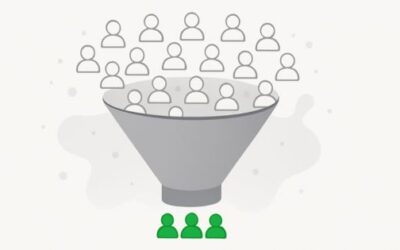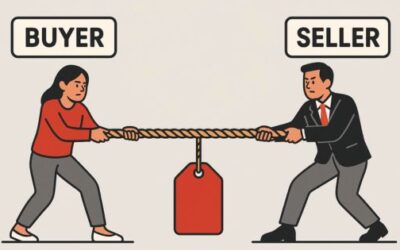Key Takeaways
- MEDDIC is a widely adopted sales qualification framework designed to evaluate deal viability and improve forecast reliability in complex B2B sales environments.
- It does not address the buyer’s motivation for change, the underlying business drivers, or how to advance deals through the full sales cycle.
- Gap Selling is a comprehensive sales methodology that enables teams to uncover buyer motivation, align with desired outcomes, and improve overall deal execution.
Sales teams seeking to generate stronger pipeline and increase win rates require more than a qualification framework. While MEDDIC can help assess existing opportunities, it lacks the structure necessary to create buying intent or establish sales momentum.
This article examines where MEDDIC is most effective, highlights common limitations in its application, and presents Gap Selling as the leading alternative for organizations seeking a complete, execution-focused approach to B2B sales.
A buyer-first methodology to increase win rates and deal velocity.
What Is MEDDIC?
MEDDIC is a qualification framework designed to help sales teams evaluate deal quality using a structured, repeatable approach. Originally developed for enterprise sales organizations, it serves as a checklist for determining whether an opportunity is likely to close.
The framework consists of six elements: Metrics, Economic Buyer, Decision Criteria, Decision Process, Identify Pain, and Champion. Each component is intended to improve visibility into the buyer’s internal decision-making and approval process.
Its core value lies in standardization. MEDDIC provides a common language for qualification and forecasting, allowing teams to apply consistent criteria across deals without overhauling their broader sales process.
Its adoption has increased among teams seeking greater forecast accuracy and cleaner pipelines. However, MEDDIC is frequently misapplied. Many organizations introduce it too early in the sales cycle or treat it as a complete sales methodology despite the fact that it was never built to guide full-cycle execution.
MEDDIC’s Key Components
Although some organizations expand the acronym (e.g., MEDDICC or MEDDPICC), the foundational elements remain unchanged:
- Metrics: The measurable business outcomes the buyer expects, such as increased revenue, operational efficiency, or cost reduction.
- Economic Buyer: The individual with authority to allocate budget and approve the purchase.
- Decision Criteria: The formal and informal benchmarks used to evaluate potential solutions.
- Decision Process: The specific sequence of steps, stakeholders, and approvals required to complete the purchase.
- Identify Pain: The business problem or inefficiency that initiates the evaluation process.
- Champion: An internal stakeholder who supports the deal and has both influence and a vested interest in the outcome.
These components are designed to help sales teams assess deal viability and align their efforts with the buyer’s internal priorities.
Sales organizations often value MEDDIC for its clarity and operational structure. It is particularly useful in mid-to-late stage deal management where long sales cycles and multiple stakeholders create complexity.
What Is MEDDIC Good For?
Improving forecast accuracy
MEDDIC offers a structured approach to assessing deal quality, helping teams identify which opportunities are truly positioned to close. This reduces forecast variance and last-minute deal slippage.
Standardizing qualification across teams
For organizations scaling their sales force, MEDDIC creates consistency in how reps qualify deals, conduct pipeline reviews, and maintain CRM data. It simplifies coaching by giving managers a clear set of criteria to inspect.
Driving internal deal alignment
By emphasizing elements like the economic buyer, decision criteria, and approval process, MEDDIC helps sellers uncover internal dynamics critical to navigating complex purchases.
As a late-stage qualification tool, MEDDIC performs well. It brings structure, flags risk, and supports internal alignment in long-cycle, multi-stakeholder deals.
What Is MEDDIC Not Designed For?
MEDDIC is a qualification framework, not a comprehensive sales methodology. It does not address the core drivers of buyer engagement or provide a roadmap for managing the sales cycle from initial outreach to final decision.
Teams that depend on MEDDIC too early in the process often encounter the following limitations:
- Inability to generate urgency in low-momentum deals
- Lack of clarity on why the buyer is exploring change
- Weak alignment between the sales narrative and business-level objectives
- Difficulty identifying non-obvious blockers that delay decisions
- Surface-level discovery that fails to build trust or uncover real problem depth
These gaps highlight the need for more than qualification. Methodologies like Gap Selling provide a structured approach for uncovering buyer motivation, diagnosing root causes, and driving the deal forward through problem alignment
Top MEDDIC Alternatives and Substitutes
Several sales frameworks aim to improve deal evaluation, but few offer a complete methodology for driving high-quality pipeline and improving execution. For teams focused on measurable outcomes and full-cycle performance, one alternative stands out:
Gap Selling: A Complete Buyer-Centric Methodology
MEDDIC helps teams qualify existing opportunities. Gap Selling helps them create better ones. It provides a structured, diagnostic approach designed to uncover business problems, identify root causes, and quantify the impact of inaction, all before proposing a solution.
Gap Selling begins with the buyer’s current state and desired future state, then maps the gap between them. This approach enables reps to diagnose challenges, understand urgency, and link recommendations to measurable outcomes.
Unlike MEDDIC, which focuses on internal checkpoints like approval processes and decision criteria, Gap Selling builds deal momentum by aligning with buyer priorities early. The result is higher engagement, stronger urgency, and more predictable revenue from early-stage pipeline through close.
Challenger: A Behavior-Driven Selling Approach
Challenger is often positioned as a leading sales methodology focused on teaching, tailoring, and maintaining control of the sales conversation. It is best suited for experienced sellers capable of delivering insight-driven pitches with confidence and precision.
However, Challenger differs from Gap Selling in several critical ways:
- Limited diagnostic structure: Challenger emphasizes idea delivery over discovery. It does not provide a step-by-step process for understanding the buyer’s current environment, identifying root causes, or quantifying problem impact.
- High dependency on rep capability: Success with Challenger often relies on the rep’s ability to introduce constructive tension and execute complex reframes. This makes it less accessible to early-career reps or teams with mixed experience levels.
For organizations seeking a repeatable, buyer-centric methodology that supports both discovery and execution across all sales stages, Gap Selling offers a more practical and scalable alternative. It enables teams to diagnose problems, build urgency, and connect solutions to outcomes—without depending on individual persuasion skills.
Why Gap Selling Is the Best MEDDIC Substitute
Most sales frameworks, including MEDDIC, prioritize qualification. They help teams assess internal deal mechanics: identifying decision-makers, confirming steps to approval, and evaluating opportunity fit. These tools support mid- to late-stage forecasting and risk reduction, but they are not designed to initiate or shape buying intent.
Gap Selling takes a different approach. It is a complete sales methodology centered on the buyer’s environment. Instead of tracking internal steps, it equips sellers to diagnose business problems, identify root causes, and quantify impact. This diagnostic process creates urgency based on the buyer’s reality—not the seller’s pipeline stage.
By emphasizing problem discovery and outcome alignment, Gap Selling enables teams to influence demand rather than respond to it. It moves sales conversations upstream, helping sellers uncover the need for change before qualification frameworks like MEDDIC become relevant. This makes Gap Selling a more effective choice for organizations seeking to increase win rates, improve pipeline quality, and create consistent sales momentum.
A methodology built for how buyers actually make decisions.
Who Is Gap Selling For?
Gap Selling is designed for organizations that treat sales as a discipline requiring structured execution and measurable outcomes. Whether leading a high-growth startup, scaling a mid-market team, or managing an enterprise sales organization, Gap Selling equips teams with the tools to drive diagnostic conversations and increase pipeline efficiency.
Gap Selling is appropriate for:
- Sales teams that struggle to establish urgency or forward motion in active deals
- Revenue leaders seeking visibility into execution across the funnel
- Companies unsatisfied with generic qualification frameworks that fail to influence outcomes
- Organizations requiring a buyer-aligned, full-funnel methodology beyond qualification-only tools like MEDDIC
Rather than focusing on whether reps are checking qualification boxes, Gap Selling ensures they uncover the business problems, root causes, and risks that determine whether a deal advances and closes.
Standardized, Practical, and Performance-Oriented
Gap Selling is a fully developed methodology supported by practical tools and implementation frameworks. It includes:
- Defined, coachable frameworks with no reliance on proprietary language
- Over 15 years of application in frontline sales environments
- Adoption across multiple sectors, including SaaS, manufacturing, logistics, and technology
- Ongoing reinforcement through certification, deal reviews, and call coaching
- Structured to complement existing processes by improving execution quality
Gap Selling is not a theoretical model. It is a practical system designed for sales teams operating in high-stakes environments that demand clarity, repeatability, and results.
Final Verdict: MEDDIC or Gap Selling?
MEDDIC remains a useful framework for assessing deal viability and standardizing qualification across sales teams. Its structured approach supports more accurate forecasting and consistent pipeline reviews.
However, for organizations focused on improving sales execution, generating urgency, and advancing deals with greater velocity, MEDDIC is insufficient as a standalone solution.
Gap Selling addresses these gaps by providing a complete, buyer-centric methodology. It equips sales teams to diagnose problems, align on business outcomes, and engage in high-quality discovery from the first conversation through to close.
For leaders responsible for driving revenue performance, whether at the team, regional, or enterprise level, Gap Selling offers a repeatable, scalable system built to improve execution and deliver measurable results across the funnel.
Frequently Asked Questions
Is MEDDIC a sales methodology?
No. MEDDIC is a qualification framework used to assess whether a sales opportunity meets predefined criteria. It does not guide discovery, diagnosis of business problems, or buyer decision-making across the full sales cycle.
What is the difference between MEDDIC and Gap Selling?
MEDDIC is used after an opportunity has been identified to evaluate deal viability. It emphasizes internal process checks such as metrics, stakeholders, and decision stages. Gap Selling begins earlier and focuses on uncovering the buyer’s motivation, diagnosing business issues, and aligning on measurable outcomes.
Can MEDDIC and Gap Selling be used together?
Yes, but with clear role separation. Gap Selling is used to create buying intent and identify the buyer’s business challenges. MEDDIC can be applied afterward to verify internal alignment and support forecasting, provided that motivation has already been established.
Why is it a risk to lead with qualification questions?
Premature qualification questions, such as asking about stakeholders or procurement, can undermine trust if the buyer has not yet expressed a desire to change. These questions are perceived as seller-focused and often stall engagement.



0 Comments